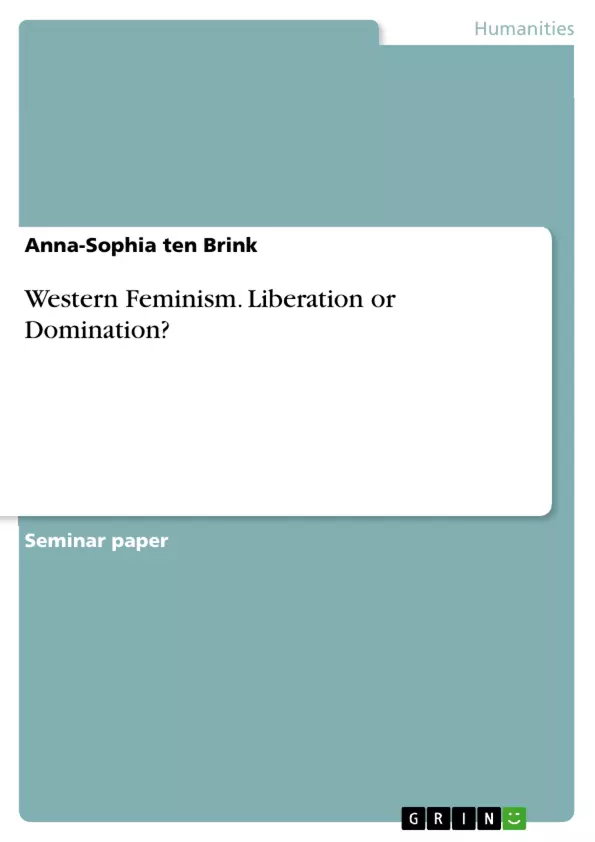The topic of (Western) feminism has been spread widely and discussed in politics of western people’s everyday lives for many decades. Current discussions of gendered language in the West are just one example of ongoing fights for equality.
This paper focusses on the topic and concept of Western feminism. It takes a closer look at the feminism which evolved in the Western world, precisely in Europe and the United States. It examines the question if the movement of Western feminism succeeded in liberation and self-determination for all women around the world or if said liberation was limited to a certain category of women from certain countries, because of certain (limited) perspectives.
Table of Contents
- Introduction
- Sex and gender
- Feminism
- Western feminism
- Globalisation of feminism
- Areas of criticism
- Postcolonial critique of Western feminism
- Deconstructing the concept of "third-world" women
- Black feminist critique of Western feminism
- Conclusion
Objectives and Key Themes
This paper provides a critical introduction to Western feminism, examining its origins, evolution, and impact, particularly in Europe and the United States. The paper explores whether Western feminism has achieved liberation for women in terms of equal rights, freedom, and self-determination, and whether this liberation has been inclusive or limited to specific groups. It further investigates the means by which this liberation was achieved, considering the potential for dominance and exploitation within the movement itself.
- The evolution and impact of Western feminism
- The critical analysis of Western feminism from various perspectives
- The concept of liberation and its inclusivity within the feminist movement
- The interplay between power dynamics and feminist goals
- The global impact of Western feminism and its limitations
Chapter Summaries
- Introduction: This chapter introduces the topic of Western feminism and sets the stage for the subsequent discussion. It highlights the importance of critically examining the movement and its impact on women's rights and liberation.
- Sex and gender: This chapter defines and differentiates the concepts of sex and gender, providing a foundation for understanding the feminist perspective. It examines how these concepts have been used to justify patriarchal power structures and the limitations imposed on women.
- Feminism: This chapter introduces the concept of feminism, emphasizing its focus on social, economic, and political equality between the sexes. It discusses the development of Western feminism and its various waves, highlighting the significant changes it has brought about in women's lives.
- Western feminism: This chapter delves deeper into the evolution of Western feminism in America and Europe, tracing its origins and key milestones. It examines the historical context that shaped the movement and the challenges faced by women in achieving equality.
- Globalisation of feminism: This chapter explores the impact of Western feminism on a global scale, examining both its positive contributions and its limitations. It discusses the complexities of applying Western feminist ideals to diverse cultural contexts.
Keywords
This paper examines Western feminism, focusing on its history, critique, and impact. Key terms include: liberation, dominance, equal rights, freedom, self-determination, postcolonial feminism, Black feminism, patriarchy, gender roles, social equality, globalisation, and power dynamics.
- Quote paper
- Anna-Sophia ten Brink (Author), 2021, Western Feminism. Liberation or Domination?, Munich, GRIN Verlag, https://www.grin.com/document/1243735



